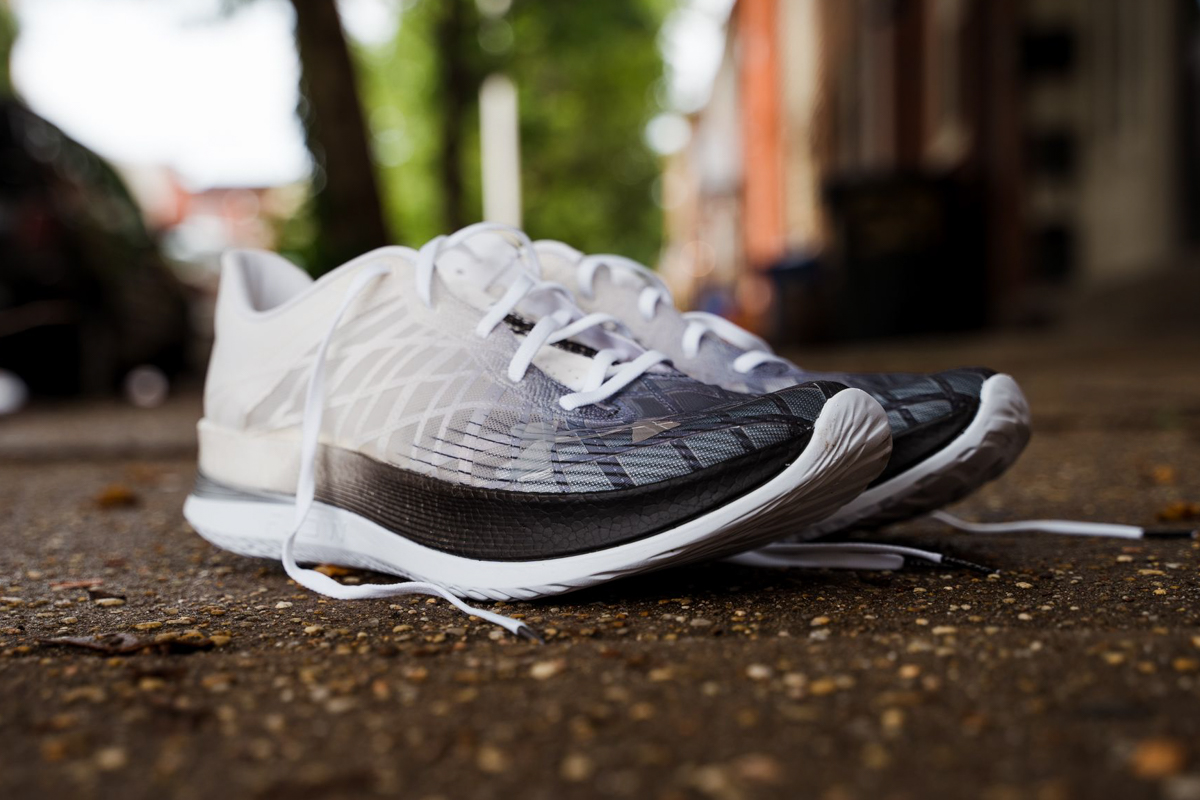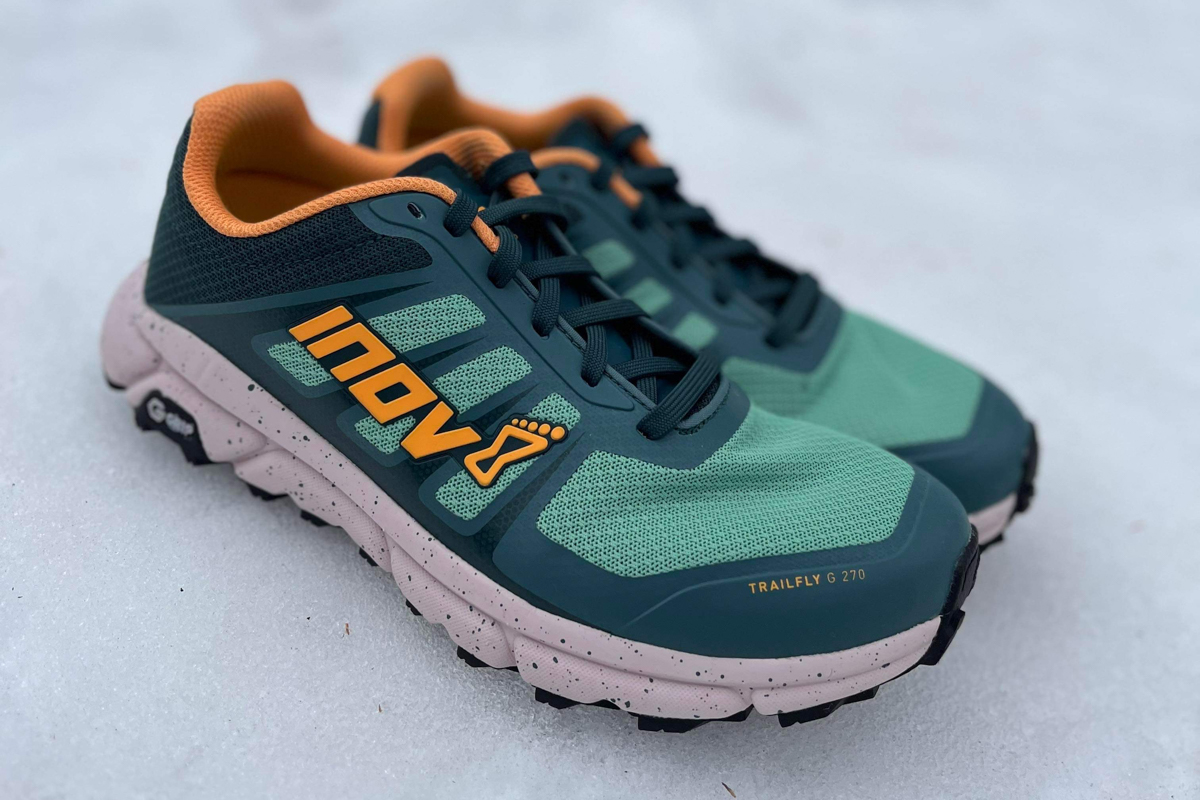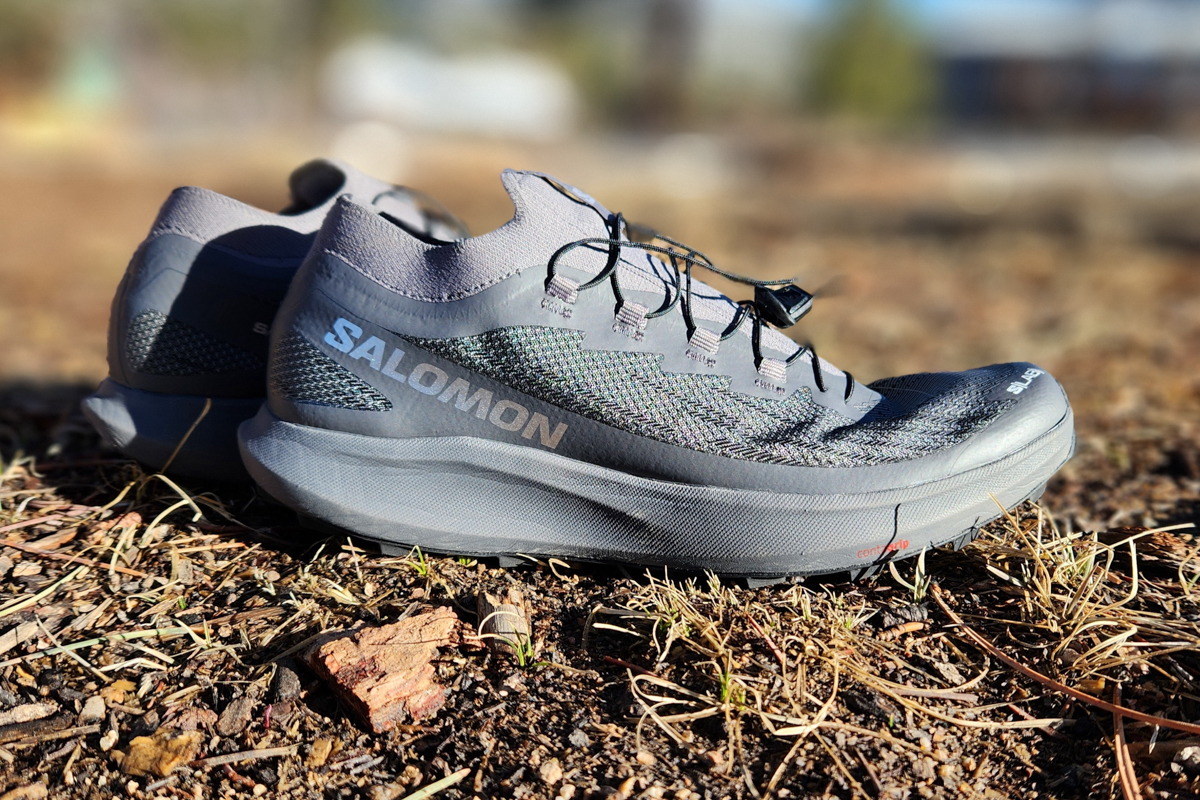
We independently review everything we recommend. When you buy through our links, we may earn a commission.
6.8 oz. (192 g) for a US M9 (Unisex sizing)
28 mm in heel, 22 mm in forefoot (6 mm drop)
Fast days in muddy terrain
Matryx mesh upper, Contagrip Mud outsole, Dual-layer Energy Surge and Energy Cell midsole
$179
TAYLOR: Every time a Salomon review comes around, I’m in for a nostalgic experience. The brand is directly correlated to my personal start in trail and ultra running. I remember the first time I slipped on a pair of the Salomon X-Mission — a budget-friendly stable runner/hiker back in 2014. Salomon was my gateway drug. In fact, it was my only addiction for a few years because Salomon was just the best around.
The trail running world has certainly grown since then, as has Salonom itself. Look no further than the Pulsar range which utilizes the latest foams and midsole geometry for evidence.
If you didn’t already know, Salomon’s premium tier has its own name — S/Lab. Over the past couple of years, the most notable shoe from the range has been the Salomon S/Lab Pulsar and its Pulsar SG sibling. Both shoes are basically the same in terms of being ultralight, slim fitting, and ready for racing more than anything. They’re the trail equivalent of throwing on your track spikes. Fast is their way of life.
Throughout the COVID era, I hounded Robbe to get my feet into the original S/Lab Pulsar. Cue supply chain issues, which only extended my begging while I watched Salomon pros continue to kick major butt in the shoe. Now, here we are in 2023, and I can quit annoying Robbe — at least about this shoe.
The Salomon S/Lab Pulsar 2 Soft Ground (known from here on out as the SG) picked up a very similar update to the Salomon Pulsar Trail Pro 2. It’s a fine-tuning rather than a rebuilding. Most of Salomon’s changes are centered around the shoe’s heel. They’re hard to notice visually, but heel lock and comfort were the aims of the update. While I don’t have the first iteration to compare to directly, I can say that this shoe has both lived up to the hype and disappointed to a degree.
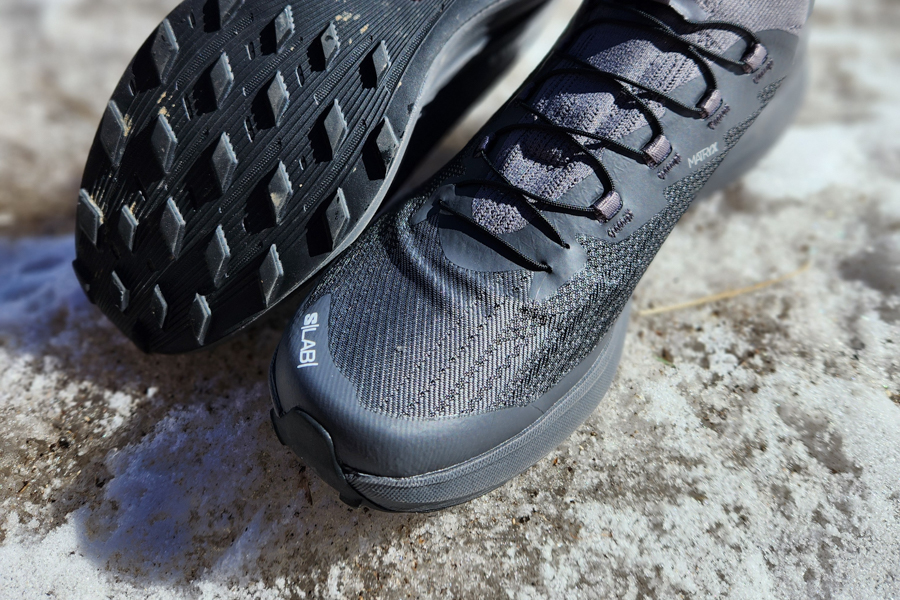
TAYLOR: If you want to feel light and fast just like Kilian Jornet (who had a major role in the development of this shoe), the Salomon S/Lab Pulsar 2 SG will deliver.
There are lightweight trail shoes, and then there are featherweights. The S/Lab Pulsar 2 SG falls into the latter category. My US M10.5 came in at a ridiculous 7.6 oz. I can’t think of another trail shoe besides the upcoming Merrell MTL Skyfire 2 that comes in under 8 oz. in my size. It feels like a thick sock — an extension of the foot. Being so lightweight made each stride feel effortless. Even more so, the weight and slim design aided in foot placement over any terrain. There are some definite drawbacks to going this extreme on the trails, but overall, Salomon has really capitalized on this featherweight package.
Even though it’s light as a racing flat, the Salomon S/Lab Pulsar 2 SG has a surprising amount of response underfoot. Thanks to Salomon’s investment into the up-to-date foams and dedication to rockered geometry in the Pulsar range, we get a smooth and responsive ride. An Energy Foam top layer provides most of that energy return, while an Energy Cell bottom layer adds a little more structure and resiliency. Again, even though the stack is only 28/22 mm (comparable to Altra Lone Peak and Saucony Peregrine), this shoe has a surprising amount of pizazz.
I feel like it’s pertinent to talk about a more pronounced medial arch. If you’re generally a midfoot striker, this smaller bulge of foam will help the shoe feel more cushioned than it is.
We’ve seen plenty of Matryx mesh uppers on models like the Hoka Evo Mafate Speed 2, The North Face Flight Vectiv, and Salomon S/Lab Phantasm CF, and it’s a great option for this package. The Matryx mesh combines lightweight materials that are extremely durable and hold their shape well, so there won’t be much, if any, stretch to it.
Combine Matryx with the updated sock-like collar, extra cushion through the heel, and Quick Lace System, and we have a horse that’s ready for the rodeo. My feet were securely fastened from heel to toe for fast-paced rambling in the woods.
Contagrip is Salomon’s proprietary outsole. This variation, Contagrip Mud, has full coverage with 5 mm lugs. The rubber itself is grippy in a variety of conditions thanks to chevron lugs that point in multiple directions with some grooves in the forefoot. Simply put, the configuration has some real digging power. At the same time, it lends itself to a smooth ride on hard-packed terrain, even roads for a time.
Shop Salomon S/Lab Pulsar 2 SG - Unisex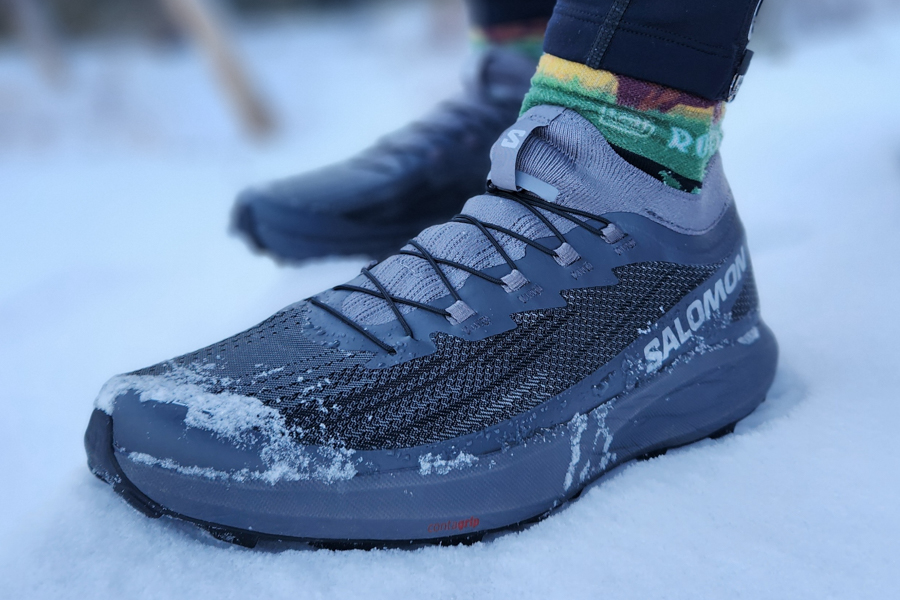
TAYLOR: It’s fair to expect me to call out a Salomon S/Lab shoe for its slim design. In fact, I’ll do just that right now. The S/Lab Pulsar 2 SG is a narrow beast. That said, even though there are a few other reasons I couldn’t spend more than a few hours in the shoe, the fit was only ever uncomfortable in the forefoot.
More importantly, Salomon is very clear about the fact that the S/Lab Pulsar 2 SG isn’t a highly protective shoe. I was still surprised by the protection it did provide, but it wasn’t enough for me to feel 100% confident blasting down technical terrain. I need full confidence in a racing shoe, and this wasn’t it. Salomon’s thin rock plate-esque material helped to filter some of the terrain but not all of it. Maybe the standard S/Lab Pulsar 2 has a little more protection to speak of? I don’t know.
I haven’t run into shoes that have weight limits very often in my life on the trails. However, I believe the Salomon S/Lab Pulsar 2 SG is one of those shoes. I noticed compression lines in the midsole almost immediately after walking around in the shoe, and there were even more after my first runs. Unfortunately, the creases were followed by some decreased responsiveness even within 20 miles of testing. I’m not sure that it’s the foam’s fault, so much as the shoe being designed for lighter runners. If I were to make a guess, this shoe is designed for the 150-pound runner and under rather than my 5’10” 170 lb. frame. My weight has accelerated the aging process much quicker than I would have expected. For a high-end $180 trail shoe, it’s simply a bummer.
The Salmon Pulsar Trail Pro 2 has the same foam, but I didn’t experience the same kind of compression at all.
Shop Salomon S/Lab Pulsar 2 SG - Unisex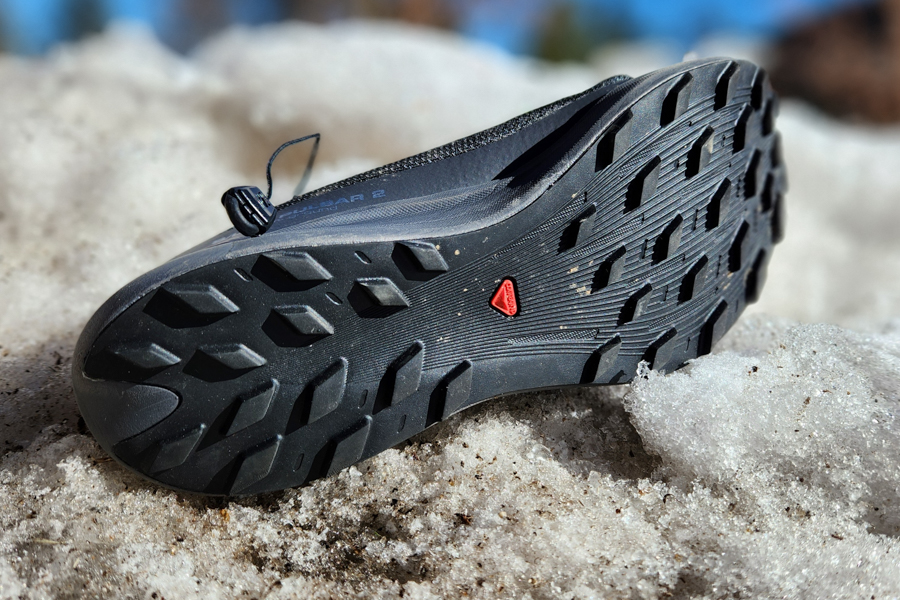
TAYLOR: I would imagine that Salomon knows how to throw a good party. Every time it’s involved in something, it seems to set a new standard. Salomon S/Lab Pulsar 2 SG is a good example of this. This is an extremely light, fast, and proficient trail racing shoe that will be able to move over most terrain at any pace you want it to. Of course, faster is better in this case.
I was surprised at the protection and security this package provided, even though it is one of the very few trail shoes in the featherweight category. Personally, I think the S/Lab Pulsar 2 SG would be reserved for specific outings like short distances (under 2 hours), fast paces, and moderate to technical terrain. Heck, it’d be even better if a little bit of mud is in there too.
Wide-footed and “heavier” runners, be weary. Like most S/Lab models of the past, the S/Lab Pulsar Trail 2 SG seems to have a specific runner in mind.
At the end of the day, did this shoe live up to my personal hype? Mostly.
You can pick up the Salomon S/Lab Pulsar 2 SG for $179 at Running Warehouse (featuring free 2-day shipping and 90-day returns) using the buttons below.
Want to learn more about how our review process works? Check out this guide.
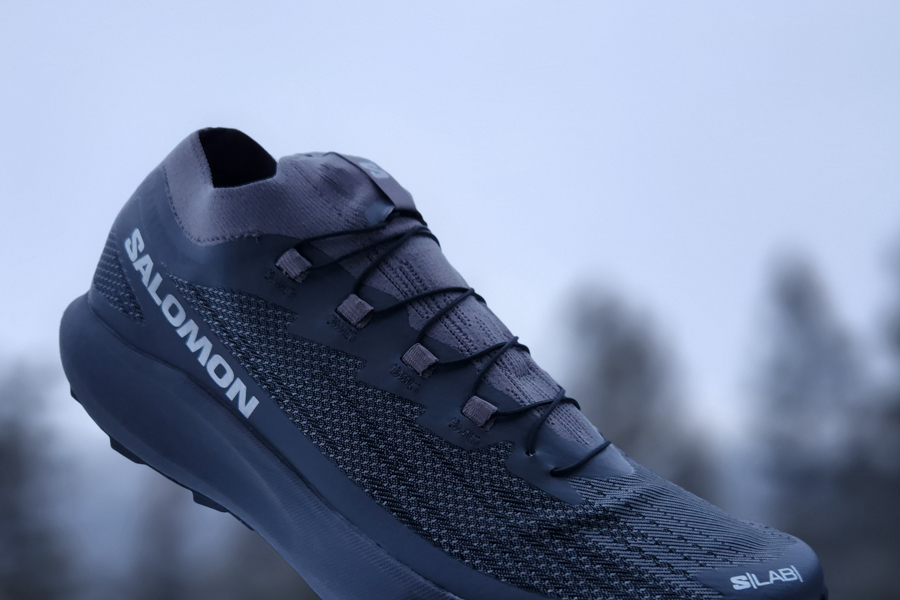
Have something to say? Leave a Comment

Taylor Bodin is a trail and ultra runner living in Estes Park, Colo., with his wife and daughters. As the head of the Dirt Division at Believe in the Run, trail running is pretty much the only hobby he can manage right now and loves it. Every so often, he will pop off a race or FKT attempt because competition is pure and the original motivator for him getting into running anyway.
More from Taylor